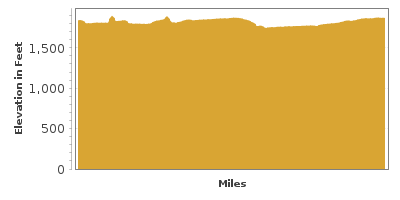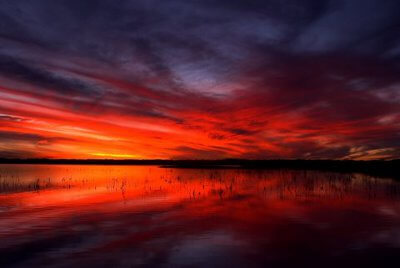Wetlands and Wildlife Scenic Byway
Cheyenne Bottoms and Quivira National Wildlife Refuge
| Mileage | 72 miles (116 km) |
|---|---|
| DurationThe duration is an estimate of a one-way drive and does not include any stops or side-trips. | 1 hour, 2 minutes |
| SeasonsThe seasons listed are the best seasons for this scenic drive. If Winter is not mentioned, the road may be closed during the winter. | Spring, Summer, and Fall |
| Roadways | Kansas Highways 156 and 4, US Highway 281, NE 10 Avenue, and NE 30 Road |
| ServicesThe cities or towns listed have either Food or Services such as gas, pharmacies, etc. | Great Bend, KS▼, Heizer, KS▼, and Stafford, KS▼ |
| Rating | 3.8 average from 12 votes |
| My DrivesTrack your favorite scenic drives by selecting those which you want to take and those that you have taken. Using your free account, simply sign in and select My Drives. | |
| Share |
Our free Road Trip Planner will reverse the route and include the places of interests. Click the “Add to Road Trip” above to start planning your next road trip.
Send this link to your phone. Standard text messaging rates apply.
() -Get directions from your start address to the beginning of and including this scenic drive. Choose either an alternate ending or same as start.
Have more destinations? Use our free Road Trip Planner to completely plan your adventure. Click the “Add to Road Trip” above to start planning your next road trip.

The Wetlands and Wildlife National Scenic Byway encompasses two of the world’s most ecologically important wetlands — Cheyenne Bottoms, the largest marsh on the interior of the United States, and Quivira National Wildlife Refuge. More than 60,000 acres of natural wetlands host hundreds of thousands of migrating ducks, geese, gulls, cranes and shorebirds annually creating a living spectacle of color, motion, and sound.

The scenic drive travels from Hoisington to Stafford. To reach Hoisington, take exit 184 off I-70 and follow US-281 south.
Kansas being flat and dry is a misconception. Heading east on KS-4 out of Hoisington, you soon arrive at one of the most important shorebird migration stops in the North America, Cheyenne Bottoms Preserve (A1). If roads are dry, explore the causeways by car and make sure you leave time to stroll the many trails. Enthralling any time of year, the marsh is a refuge for the endangered whooping crane, bald eagle and piping plover and home to mammals such as muskrat, beaver and mink. The Nature Conservancy preserves these fragile communities.
Stop at the Cheyenne Bottoms Scenic Overlook (V1) for a spectacular view of the landscape and the distinct 64-mile square mile depression that is Cheyenne Bottoms. Learn more from the interpretive panels dotted along the byway.
Nearby, the small town of Claflin is a historic gem. On Main Street, storefront facades evoke Claflin in the 1800s. Learn more about the region and its people at the Claflin Historical Society Museum (M1). Just to the north of town, explore seven historic bridges constructed of local limestone, built by the Work Projects Administration in the late 30s through the early 40s.
At the Kansas Wetlands Education Center (A3), interpretive displays tell the geologic story of Cheyenne Bottoms, the wetlands and its colorful inhabitants. Stroll the George Stumps Nature Trail, a handicapped-accessible boardwalk through the woods or learn more by taking a guided tour. Reservations for tours are required and a small fee is charged. The visitor center is a valuable resource for information on hiking, biking, camping, boating, fishing and more.
At the East Entrance of the Cheyenne Bottoms State Wildlife Area, take the short drive down the entrance road to the observation tower. Get a bird’s eye view of Cheyenne Bottoms Basin and the limestone bluffs that rise 100 feet, and of course a myriad of birds. Each season brings different species and fall is the best time to see whooping cranes.
Once you reach the KS-156 junction you will be following the wagon route of the 1800s, as a portion of the Santa Fe Trail passes here. Steeped in history, the trail brought the first white settlers and this area became a hub of trading and military posts. Learn more at the Barton County Historical Society Museum (M2). Housed in original 19-century and new buildings, relive the past through dioramas and archaeological artifacts depicting the Native American cultures of the region, dolls from the 1850s, medical offices and more.
The town of Great Bend has always been a way station for travelers and offers a wide range of services, restaurants and accommodations. Named for its location at the bend in the Arkansas River, be sure to detour for a view. Admission is free to the Great Bend Brit Spaugh Zoo and Raptor Center (A4) The zoo is home to a fascinating array of more than 100 mammals, birds, reptiles, and insects and also has an aquarium. The Raptor center rehabilitates injured raptors and other birds with the ultimate goal of returning them to the wild.
As you continue on the road, take in the beautiful expansive landscape, prairie grasslands, pointed hills, and quaint towns.
The Quivira National Wildlife Refuge (A2) was established in 1955 to protect the wetland that is home to hundreds of species of birds, badgers, beavers, white-tailed deer, prairie dogs, and more. The visitor center features hands-on displays, interpretive panels and dioramas about the species that live here, management practices and the region’s history. Several miles of hiking trails and interpretive walks allow you to get up close and observe the diversity of wildlife, immerse yourself in the serene beauty of nature and photograph some of its wonders. Don’t miss the Kid’s Fishing Pond for children 14 and under and the accessible Observation Tower which rises 8-feet. Drive the 14-miles through the refuge, taking advantage of the pull-outs and photo blinds. At the north end you will see the start of the Wildlife Drive, a one-way 4-mile adventure on gravel road into Quivira’s most exciting bird-viewing area and views of Big Salt Marsh where whooping cranes gather. Enjoy the herons and other waders, as well as coyotes, red fox and reptiles.
Driving on US-281, in St John, stop at the McCandless Prairie Dog Town to see and hear the squeaks of delightful black-tailed prairie dogs as they guard their burrows.
Our scenic drive comes to an end as NE 70th Street meets US-281.




